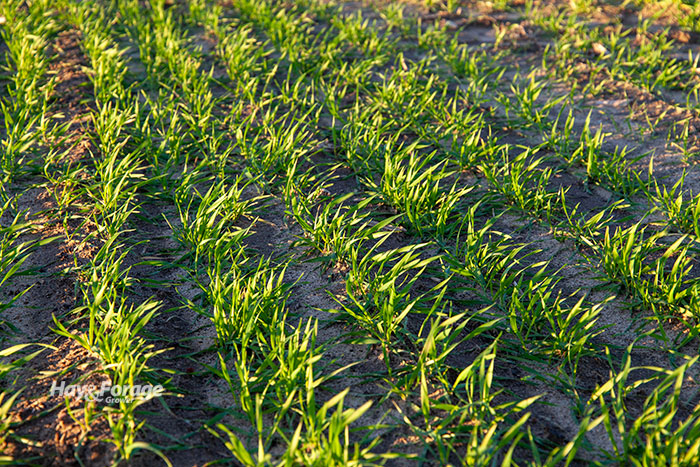
Although there is still corn silage harvest and the final cuttings of alfalfa have yet to be packed away, preplanning for those winter cereal plantings needs to begin sooner rather than later.
Cereal forages such as rye, triticale, and wheat have become mainstream feed resources on many livestock farms. These days, we know much more about what it takes to maximize the yield and quality of these forages than we did 10 years ago.
“Regardless of your choice of species, there are several steps you can take to boost production and achieve maximum success with these winter forages,” writes Amanda Grev in the Maryland Milk Moos newsletter. “One of the biggest things you can do to maximize the benefits of winter forages and increase yield potential the following spring is to use an earlier planting date,” the state’s extension pasture and forages specialist emphasizes.
Grev points out that with proper fertilization and management, winter forages can be high yielding with as much as 17% to 20% crude protein (CP) and relative forage quality (RFQ) values over 180. At the same time, winter cereals also provide environmental benefits such as additional nutrient retention and soil erosion control.
Some of the key recommendations that Grev suggests growers adhere to for a successful winter cereal establishment and harvest are as follows:
1. Choose a proven variety. New varieties are superior in yield and forage quality to older varieties. Plant certified, weed-free seed to ensure maximum performance.
2. Plant early to maximize fall tiller production and an earlier harvest the following year. This typically means seeding about 10 to 14 days prior to the optimum wheat-for-grain planting date. Not only do earlier plantings yield more tonnage, additional residual nitrogen is taken up by the plants in the fall that might otherwise be lost to leaching.
3. Don’t compensate for later planting dates by planting at a higher seeding rate. Instead, consider having the seed treated with a broad-spectrum fungicide.
4. Seed at least 1.25 inches deep. This will allow roots to establish firmly in the soil and resist spring heaving.
5. Apply nitrogen in the fall to stimulate fall tillering. This can be in the form of commercial fertilizer or manure. If manure is used, don’t delay planting for the sake of getting manure applied. It’s more important to seed early.

